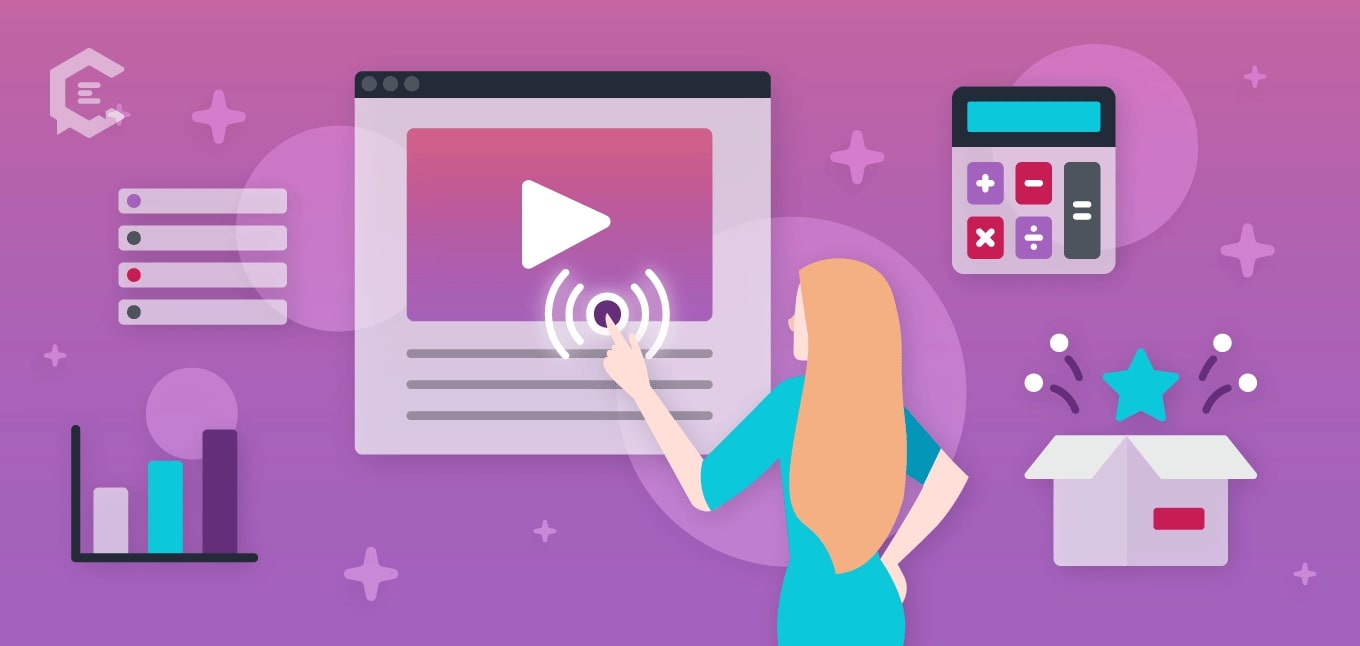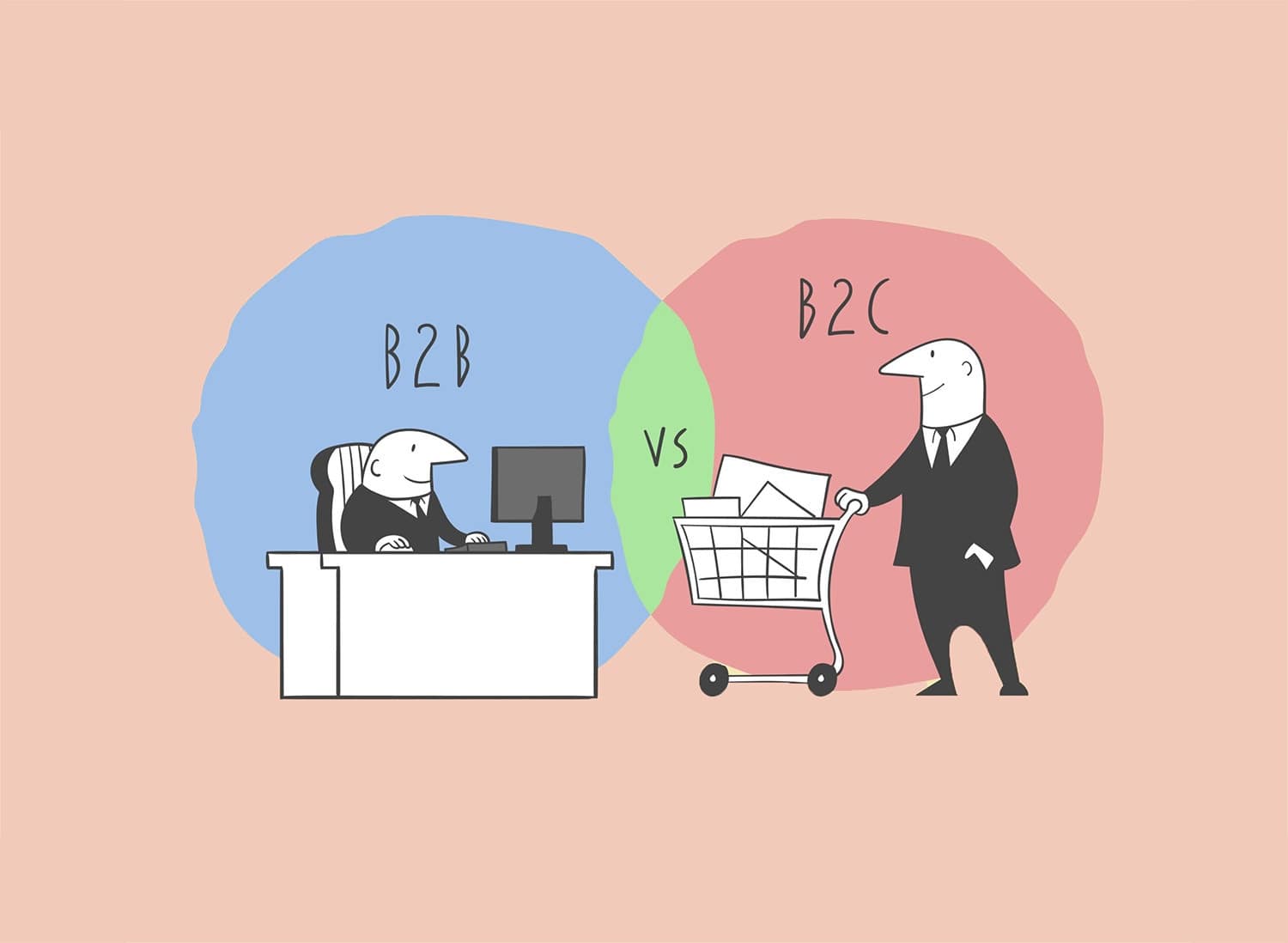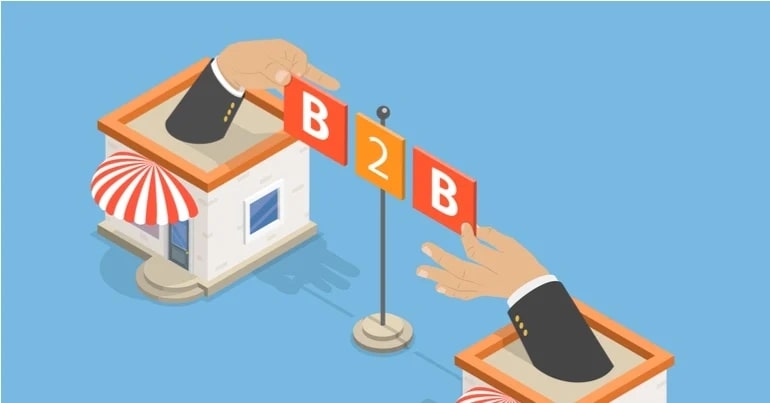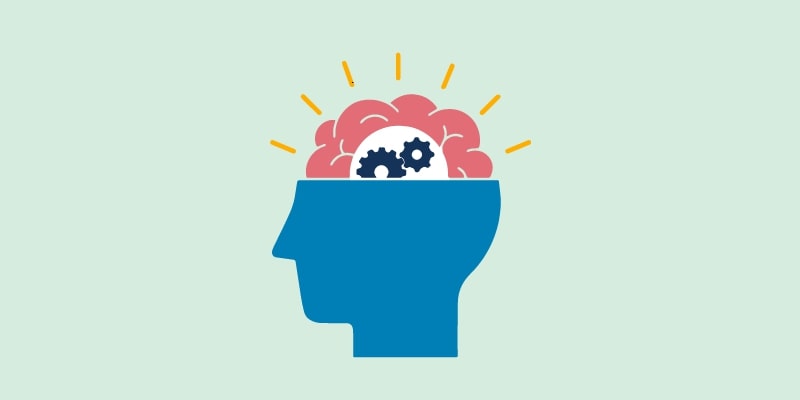How to Develop a Successful B2B Content Marketing Strategy in 10 Simple Steps
The foundation of great content is a well-thought-out content strategy. On the other hand, it is all too common for firms to skip the planning steps and start writing content without giving it any thought. Content strategy is vital, but implementing it is a very different matter.
A B2B content marketing strategy is focused on attracting your ideal customers with significant issues and needs and providing them with valuable information. Make your content move your audience by inspiring them to act, and your competition will struggle.
Content is created daily, but much of it remains stagnant. To start with, 55% of B2B marketers are unclear on what kind of content marketing strategy works best.
Your content strategy is particularly significant because of the likelihood of obtaining quality, organic leads and standing out amongst your competition. That’s excellent because that’s exactly what we’re going to offer you. In this B2B content marketing tutorial, we will show you how to take control of your content marketing strategy while increasing the success of your campaigns.
What is a business-to-business (B2B) content marketing strategy?

B2B content marketing is the practice of leveraging content to increase the audience for your business, build brand affinity, and drive sales by appealing to other businesses. Because it is designed solely for businesses, B2B content marketing is distinct from other forms of content marketing.
The entire content marketing strategy of your company is your vision. This includes everything from how content is developed, managed, and ultimately saved or updated. Your approach ensures that you’re creating quality, captivating, and profitable content that brings in qualified prospects (who are businesses) and sells them to customers.
Your content strategy should specifically describe:
- What questions your plan will answer for your audience
- Your content marketing goals
- How will your content stand out from the rest?
- The publishing formats you’ll utilize
- The channels where you will promote content
- How to assess content marketing success
What are the key differences between B2B vs. B2C content marketing?

Customer personas
B2B: In B2B marketing, your content efforts should again be centered on topics like analytics, trends, and return on investment (ROI).
B2C: The key to successful B2C marketing is connecting with a diverse array of customer personas within a given specialty. Providing a product that appeals to everyone does not mean your content will be well-received by all your customers. You must first classify your customers into personalities and determine the appropriate timing, emotion, and attraction for each. The content strategy will be unique to each of them.
Motivation to buy
B2B: For B2B customers, what’s important is how much value you offer in the form of efficiency and knowledge. A huge part of B2B visitors’ motivation to come is the desire to be able to communicate these positive results and statistics with others in their organizations.
You are building long-term trust with these customers, as well as clientele. This is why companies value blogs. They are included in their B2B content strategy, appealing to the kind of customers they serve and initiating the selling process even before customers actually buy. That said, instead of merely selling, you should use content marketing to create your business or personal brand as a leading voice.
B2C: Generally, customers who make purchases via your B2C site are driven by emotions. They want to be pleased with their purchase and also want to be entertained by it. However, stories can easily elicit emotional triggers, which drive B2C customer consumption. Using your product or service to tie into stories that touch on their emotions is a great idea.
It is also important to recognize that an end-user of a B2C product or service will usually look for one that can help them to resolve their own difficulties, and your product or service should always offer an answer to their own problem or issue.
Content strategy
B2B: In a B2B context, the focus is on the financial outcome. Concrete data, numbers, and physical attributes are what really matter. The relevant information, promotions, and adverts are focused on helping companies know the ‘what, why, and how’ of their business processes.
B2C: Storytelling, while popular B2C, may also be effective in B2B situations when supported with data-driven materials. This is especially relevant for the kind of content you create to sell your website, such as blog posts, and articles.
Blog posts, content on your website, social media postings, and all other content you create with the B2C market’s emotions in mind are the key drivers of B2C content marketing activities. Successful content-based campaigns make use of storytelling that is deliberately planned. In general, stories are better vehicles for delivering emotional “triggers,” which serve to move the B2C marketplace and are easy to relate to.
Decision-making process
B2B: Since B2B decisions involve a bigger number of stakeholders, B2B has a longer decision-making process. When selling B2B, it’s important to spend time establishing relationships and pursuing partnerships. Many resources or many phone calls might be required. Find out who the main decision-makers are and do everything you can to win a pitch.
B2C: B2C process is quick because it’s common to talk to one person at a time. People who make their purchase conditions at the time will mostly buy from B2C. Attracting the attention of your target market and generating a quick desire for your product is required if you wish to succeed. Given this, a big pool of potential buyers is a wiser and more practical goal.
Why is B2B content marketing strategy important?

Targeting accuracy is one of the primary distinctions between B2B and B2C marketing. It is usually pretty uncomplicated to engage B2C with regard to targeting. Because customer-facing content targets decision-makers, your objective is to capture and hold their attention long enough to convert.
On the other hand, B2B is far more difficult. When you’re dealing with companies and asking them to drop four, five, or even six figures on your products or services, you won’t be making impulse purchases. Vendors and suppliers are commonly obtained by others in the firm, not by the decision-maker.
You also need to address the individual who has the capacity to make buying decisions so that your material will be compelling enough to influence information gatherers. Thus, these people are occupied. When it comes to B2B content strategy, you have to have clear, specific, and targeted content.
10 steps to build a comprehensive B2B content strategy
So, now that we know what B2B content is, it’s time to learn how to utilize this marketing channel to its fullest potential. Because there are so many things to consider, let’s begin by investigating.
Step 1: Determine your goals

For an effective content strategy, setting goals is a crucial element. After all, you must choose a goal that is demanding to accomplish but is not too difficult that it is completely out of reach.
To achieve the perfect balance and set goals that are both tough but within reach, how do you do it? When you make the decision to create a goal, you have to make sure that the goal is SMART - specific, measurable, attainable, realistic, and time-bound. Furthermore, for instance, to grow 50 new leads from January 1 to March 31, you’ll want to develop 50 new leads using our content marketing efforts. You’ll also want to get 5,000 organic search hits in January. That’s how the SMART model works
Here are some suggestions for SMART B2B content marketing goals.
Use current facts and trends
Making detailed, difficult-to-reach goals is one of the toughest aspects of setting SMART goals. Start by looking at your present data and patterns to make the process easier. This will help you understand where you are now, what you can achieve, and how to set new goals.
Make a plan for arising problems
Idealistically, you set SMART goals, everyone starts working toward them, and you always succeed. Even the best-laid marketing plans inevitably go awry. When you plan your marketing strategy, consider all the possible obstacles your team can face, and prepare solutions to prevent or address them before they even arise.
Keep a record of your progress
Ensure that your goals are concrete and that you stay committed to them. Keep a record of your progress at least once a month. Deciding what data to review will depend on your aims, but don’t worry about overthinking it.
For example, if you want 20,000 organic search visitors in 6 months, check your monthly organic search traffic. In order to assess whether you are on target to meet your objectives, you need also evaluate your previous records. This will allow you to set new goals that are more closely aligned with your priorities.
Inform your team
Remember to communicate with the rest of the team to help you get closer to your SMART goals. When people learn about the difficulties you are facing and your achievements, make sure that the rest of the team is fine with everyone sharing information.
Step 2: Create buyer personas
It’s crucial to know who you’re creating content for before you start writing. In order to get this done, you must first establish buyer personas. Demographics, industry, job role, goals, problems, decision-making variables, information sources, and more should be included in buyer personas. Here are some suggestions for creating buyer personas.

Learn more about your Google Analytics data
With the information here, you may learn much about your site’s visitors. In addition to age, gender, and location, you will be able to access basic demographic information, as well as interest data that displays the topics they are interested in. While it’s not critical to your business, this option allows you to expand into new, unrelated topics.
Interview your internal team members
It is imperative that you speak with your salespeople, customer support representatives, and account managers who are on the front lines with customers each day. This will provide a great insight into the pain issues and inquiries of their target customer. Think of questions you may ask your team to better understand the attitude of your target customers and customers.
- What do your prospects most frequently ask about?
- What makes a prospect or client delighted? Why?
- What are prospects or customers unhappy about? Why?
- Who frequently influences purchase decisions at prospects and customers?
Step 3: Sketch out a customer journey
The additional layer of mapping the buyer’s journey enables you to identify the concerns that a prospect has during each step of the buyer’s journey: awareness (top-funnel), consideration (middle-funnel), and decision (bottom-funnel).

| Awareness | Consideration | Decision | |
|---|---|---|---|
| Buyers’ problem | The buyer is showing symptoms of a problem. | The buyer has identified their issue and is comparing all possible solutions. | The buyer has chosen a solution strategy and is developing a list of all relevant items and vendors. |
| Goal | Educate your audience and answer their questions | Solve your audience’s problem | Lead your audience to their final purchase decision |
| Content focus | Buyers’ pain points | Detailed solution-centric content | Brand-oriented and product-focused content |
| Content types | Blogs, ebooks, white papers, tip sheets, guides, infographics, SlideShare | Technical blog posts, comparison white papers or e-books, webinars, product feature videos | Case studies, testimonials, product/pricing comparisons, live demonstrations, free trials |
The buyer’s requirements and inquiries are highly dynamic during the buyer’s journey. An effective content strategy should tackle the many stages of the buyer’s journey, answering the questions that arise. You must combine your understanding of your most essential buyer personas with their buyer journey. That way, you’re always talking to the correct people, answering their questions, building trust in your company, and generating sales.
Step 4: Identify your brand’s voice and tone

Use your voice to communicate your brand’s tone and style. The individual characteristics of every successful brand include a particular style and personality. To maintain consistency, work on developing a clear and powerful voice and tone. Having a personal voice and tone can help you develop a memorable brand that will engage your target audience. Let’s take a moment to understand what voice and tone mean:
Voice
Your brand personality is articulated in adjectives by your ideal customer. Is your brand humorous or professional? It is critical that all of your marketing be spoken in the same voice.
Tone
Your brand’s tone is defined by how your brand sounds and how your brand personality shows up in an online piece of content. The tone is dynamic and may alter according to buyer persona, type of content, or message that you are developing. When producing a step-by-step guide for a small firm, you will talk and use different words than when communicating with an enterprise-level prospect.
You can have just one voice for your brand, but that voice changes depending on the different types of content you produce. When you are building your brand voice and tone, make sure that your buyer personas are in mind. For instance, perhaps you’d like to sound trendy and lighthearted, but your existing customer profiles respond to plain and professional content.
As the spectrum of options for voice and tone narrows, several industries will find themselves in a rather restricted range. However, it’s okay to stretch the rules just a touch. Even in ultra-conservative businesses, the concept of “businesslike” has widened in the last decade.
Step 5: Make a content guide

Once you have a clear vision of your brand voice and tone, you must organize this content style guide is a comprehensive content style guide. A content style guide is a framework that specifies the identity and expression of your brand in words and images for everyone in your organization. Documentation is necessary for the usage of the feature, but it doesn’t have to be fancy or complex.
In order to describe your existing content, you’ll need to first create a list of all the URLs from your website.
-
Specific topic: What does the topic of content consist of? Categorize the things you’ve discussed in your content by developing a list of major subjects and assigning each part to a category or two.
-
Purchase buyer’s journey: Which piece of content is aligned with each phase of the buyer’s journey?
-
Length: How long is it? Does the word count affect how your audience views and shares it? Are your characters drawn to material that is longer and more comprehensive?
-
Tone: How is the tone of each piece? The adjectives you come up with will give you an idea of the tone of your content pieces.
-
Datedness: Some content is timeless, while others are related to current events. Now we will need to develop a scale and determine where each item of the design should be placed on that scale.
-
SEO: Is the content appropriately optimized for search engine optimization? Is there a keyword, meta description, title tag, headers, and picture alt text? Keep a list of everything, and make sure you’re not forgetting anything.
-
Visual presentation: Include visual content like movies, images, or Infographics in your posts.
Step 6: Generate content ideas

Finding ideas for new content ideas is made easy by everything that inspires you. Just look at the right place. Ideas can be generated in a variety of ways.
Competitive research
Keeping an eye on competitors’ material will help you discover which posts succeed and which ones don’t. If you really want to know more about your competition, then you have several options to find out.
Google Trends shows trending topics and terms in your field, and analytics tools provide keywords your competitors rank for. You can also study who follows who on social media and analyzing the types of content they share might give you an idea of who their target market is.
Brainstorming

Innovative new content ideas can be generated by using a brainstorming session. It takes an excellent setup and lots of effort to hold a good brainstorming session with your team.
When working in a small group, the ideal practice is to keep the members to a minimum and have five or fewer participants in each group. Everyone on your team should be brought in—marketing, design, and web development staff, as well as sales representatives, account managers, and executives.
There are no “poor ideas” in the early stages of brainstorming. Even if an idea sounds far-fetched, resist the urge to say “no” to it. Rather, try to see if you can find a way to accept the truth of each notion, and then see if you can include it in your plan. Note that you will want to re-evaluate all ideas before selecting the final ones, so make sure you record everything.
Searching for relevant keywords
Keyword research should include a study into your buyer personas and the buyer’s buying journey. Which themes best describe your target personas? In what new ways would they like to learn? How do they overcome their obstacles?
Start searching Google for these words and phrases, and watch what comes up. Next, make use of these keywords as the groundwork for future subjects.
Step 7: Select a content type

In order to be successful, one of the key tasks of the content strategy process is to develop target audience personas, which aid in finding out what content your target audience would like and want. B2B businesses engage in a variety of popular content categories, including:
Blog post
The average blog article is roughly 1500 words and has any number of different topics that are relevant to your target audience. Keep your writing focused on how you and your executives want it to be. Your B2B content writing purpose is to educate and inform your audience, so put yourself in their shoes.
White papers and ebooks
In exchange for submitting a contact form, consumers can obtain white papers and ebooks. The posts are often more lengthy, detailed, and infrequent than blogs. These forms work effectively for decision-makers through leadership content.
Case studies
Case studies demonstrate the predicament a brand finds itself in, the solutions it provides, and the benefits these solutions deliver. Because the reader will have to assume the persona of the brand in the study, this helps to create leads. They can see you fixing the same problem for them because of how your firm addressed a problem.
Webinars
Webinars are live (or recorded) presentations offered via a website or social media. Your staff will have a better idea of your most engaged audience because of these lead-generation tools, which encourage users to sign up ahead of time.
Infographics
Infographics are a fun way to communicate statistics, testimonials, quotes, entertaining facts, process tips, or FAQs. Easily shareable on social media and maybe included in email marketing campaigns make them great for advertising.
Relevant videos
Interviews, customer testimonials, product explanations, tutorials, and more are just some of the several types of B2B content marketing videos that exist.
Step 8: Make an editorial content calendar
When you’re creating your content strategy, start by making a document that lists your whole content strategy. It should include objectives, target demographics, buyer journeys, brand voice and tone, keyword research, content ideas, and content kinds you want to develop. Creating an editorial or content calendar is another important part of establishing your plan. The timeline represents the content you plan to publish over a certain time period.

When you’re starting to plan your editorial schedule, you can do it on a monthly, quarterly, or even yearly basis. Our clients report that working on a quarterly basis works best for them. Regardless of the firm, the editorial schedule should include content like:
- Topic/title
- Key phrase(s)
- customer persona(s)
- Stage of the buyer’s journey
- estimated publication date
- CTA button
- Author
Step 9: Put your plan into action
After developing your strategy, it’s time to implement it. It’s okay to adjust your content marketing approach as you go because you’re only establishing a baseline for your efforts.
Now, having a plan is one thing, but following through and producing new material is another. Keep these things in mind if you want to make consistent new content.

Establish priorities by setting deadlines
Urgent jobs are given higher ranks, and deadlines are set correspondingly in order to make sure these activities are completed on time and in an organized form. Deadlines keep your team organized and on schedule.
When preparing to create your content strategy, make a list of all the objectives you want to accomplish, and rank them from most important to least important. In deciding which methods to implement, consider which of your personas will benefit the most and which will generate the greatest return on investment for your firm. These are the initial methods that you should use.
Install a project management tool
At least while working on your own, you can work with a simple task list in your notebook. However, this approach is highly inadvisable. The time to make this a better process is before any ideas or tasks have been created. If you are on your own, choose a free project management software, utilize it to establish and manage your tasks, and do it early in the process.
Seek from external resources if needed
Even if your plan is modest, you may not be able to handle all this content on your own. Working with an inbound marketing agency to develop, create, and execute your content strategy can relieve you and your team of some of the workload.
Step 10: Measure your B2B content strategy’s performance

The amount of money you gained compared to what you’ve invested is known as the content marketing ROI. Many firms see the return on investment (ROI) as the primary goal because it has a direct link to income.
After you identify the performance indicators to track, go back to your goals. For example, you might measure the number of organic visits to your site. You may also want to report on related metrics like keyword ranks, organic traffic leads, and onsite engagement of organic traffic leads.
It might be time to meet down with your team and make some changes to your goals and general content strategy if you notice the numbers aren’t heading in the correct way after a few months.
Final words
Creating a B2B content strategy is a huge task, and every department in your company needs to provide input. While completing all of these stages may seem daunting, take it one step at a time and you’ll have a strategy in hand.
It’s important to spend time developing your personas, developing your brand tone, and creating a content plan since the effort is well worth it. This stated approach serves as your roadmap as you move forward, while also ensuring that everyone on your team is on the same page when you begin developing content. Following the aforementioned stages and focusing on the end objective will help your company achieve content marketing success.
New Posts






